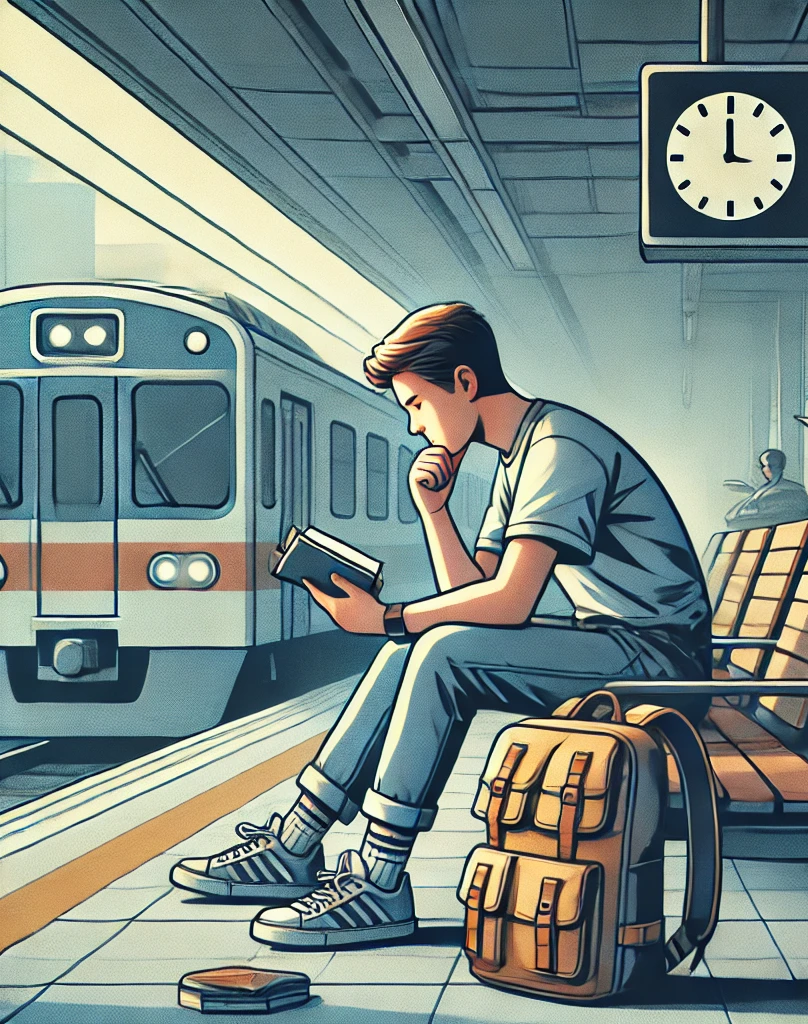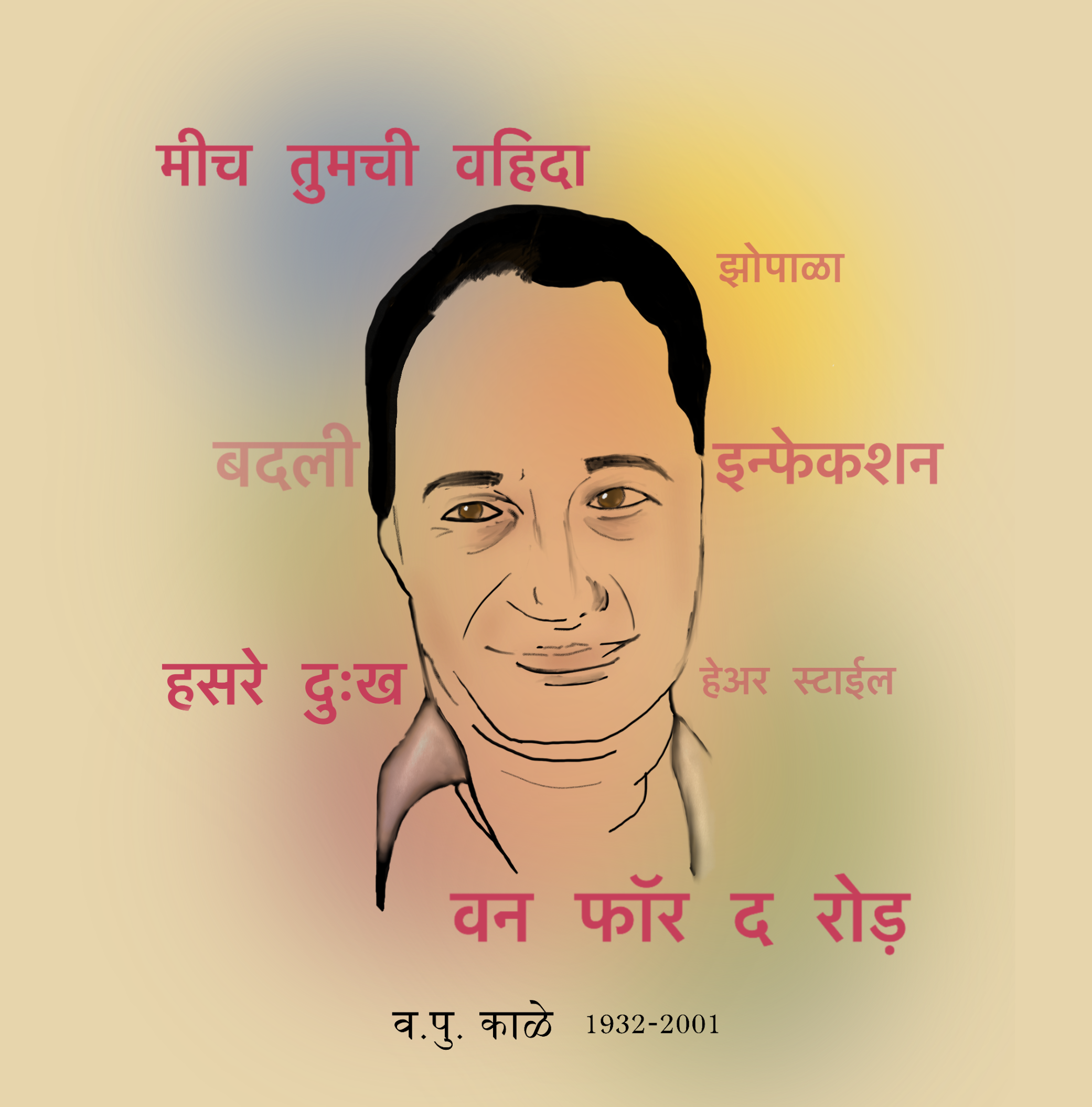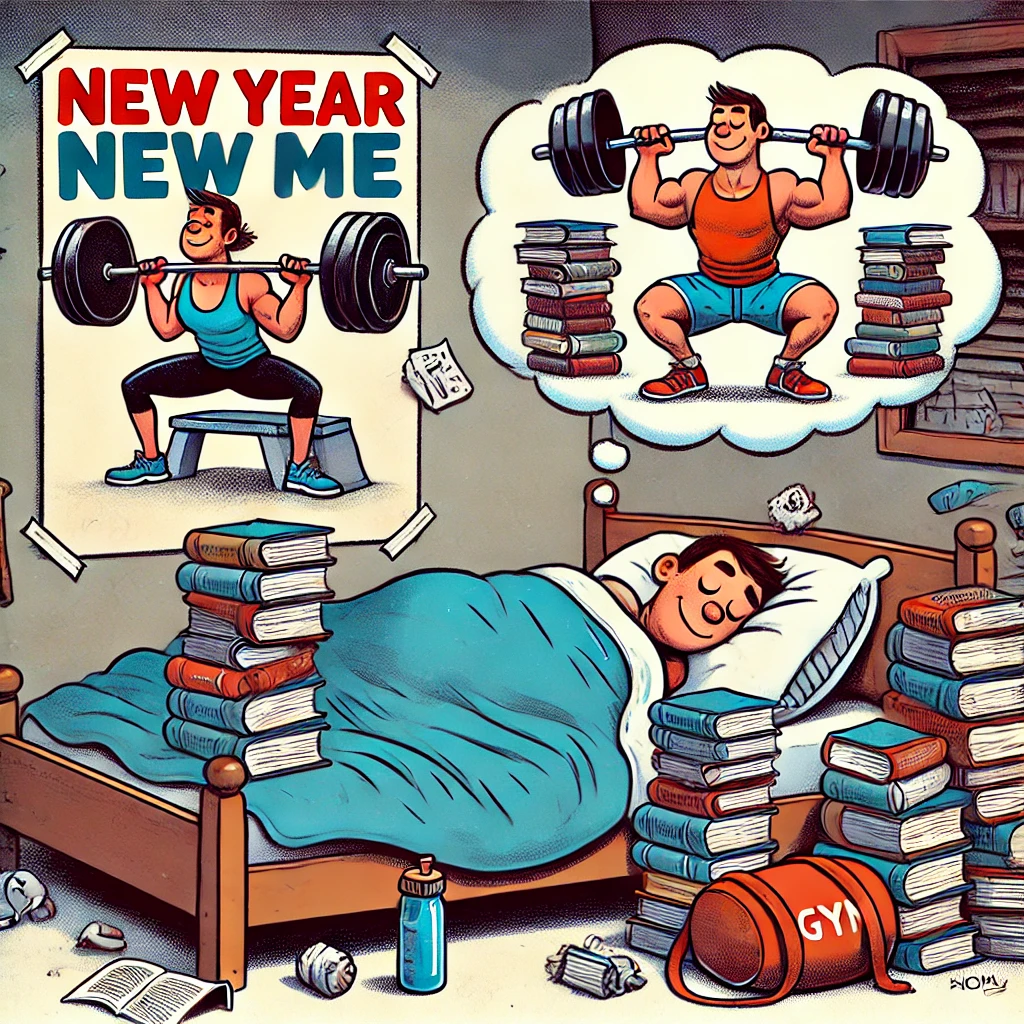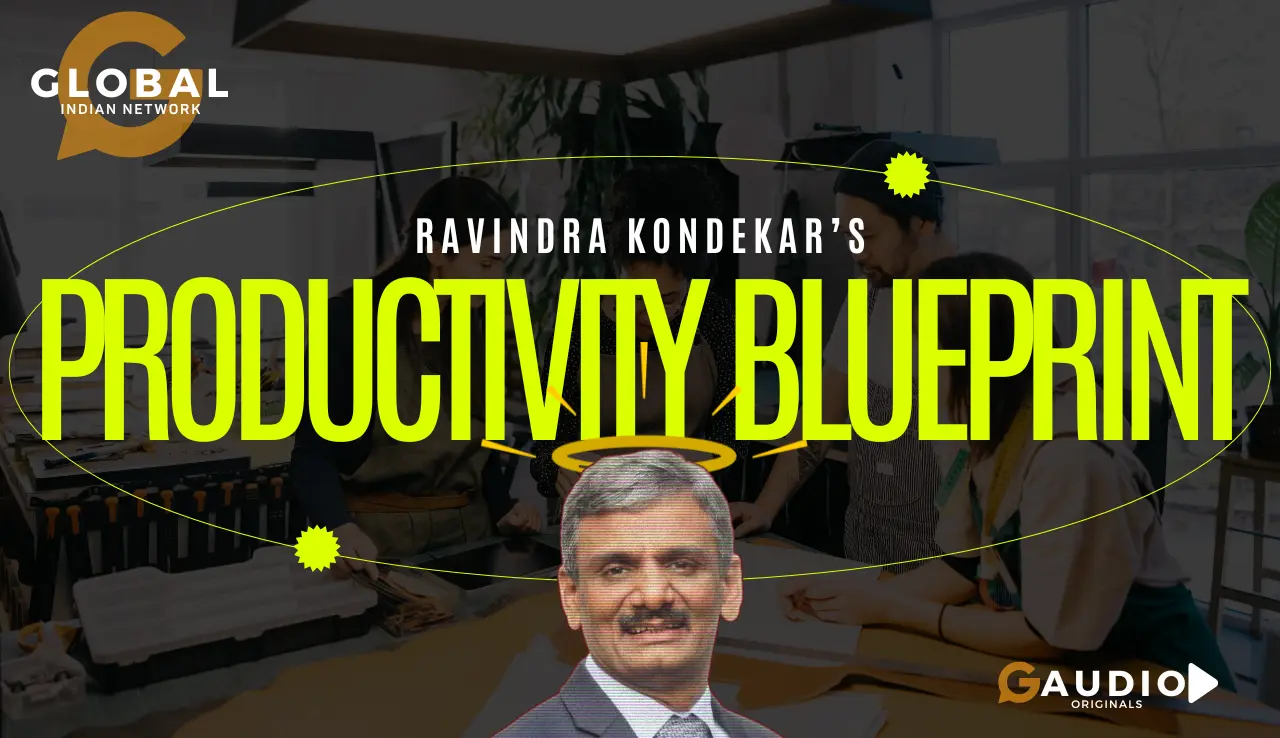Turning Wasted Time into Opportunity: A Smarter Way to Handle Delays
We’ve all found ourselves in situations where time seems to slip away—waiting in a long queue, stuck in traffic, or sitting idle due to slow processes. It might be standing at a bus stop with no real-time updates, waiting at a railway station for a delayed train, standing by an elevator that stops at every floor except yours, or watching your flight delay stretch longer and longer at the airport.
Whether caused by inefficiencies in the system or an unexpected surge in demand, these moments can be frustrating. We might express our displeasure, give feedback, or even try to push for better systems. But in those moments when nothing is going to change immediately, a shift in mindset and a few simple strategies can help us make the most of the time we’d otherwise lose.
- Use Solitude to Think Through a Problem – If you’re lucky enough to find a quiet corner while waiting—like a nearly empty waiting room or a peaceful airport gate—use the solitude to reflect on a complex issue you’ve been putting off. Moments like these are rare and precious in our always-on lives. We often long for uninterrupted time to think deeply, yet when it arrives unannounced, we tend to overlook it. Embrace it—you might be surprised at the clarity it brings.
- Network & Connect with People Around You – Waiting in line or sitting idle doesn’t have to be a solo experience. Strike up a conversation with someone nearby. Don’t go by their looks/attitude, they are often deceiving – we often misjudge. Just this week, I had a long wait at the Road Transport Office for the re-registration of my car. The person next to me was in the same boat, so I opened a conversation. We ended up chatting for two hours – sharing lots of interesting information from our work and life in general.
- Have an “Unexpected Free Time” Kit – A little preparation can make any waiting period feel more purposeful. Noise-cancelling headphones to listen to a podcast, audiobook, or calming music, and an E-reader or Read Later app to keep a book or saved articles ready for easy access.
- Organize & Declutter Your Digital Space – Small digital cleanups can be a productive way to pass the time. Sort through your photo gallery – Delete duplicates and organize albums. Remove unused apps – Free up space and declutter your phone.
- Embrace Boredom – Sounds counterintuitive, right? But as Deep Work author Cal Newport explains, moments of boredom—rare in modern life—are actually a blessing in disguise. They help strengthen focus, boost creativity, and give our minds a much-needed break from constant stimulation.
Time wasted is often an opportunity unnoticed. Instead of frustration, use delays as moments to reflect, learn, or tackle small tasks. A shift in mindset can turn setbacks into stepping stones for growth.
There’s no single “right” way to handle unexpected waiting time. Some days, you might network or use the moment to clear out digital clutter; other times, diving into a book or simply letting your mind wander might be the better choice. The key is to have all these options ready and decide in the moment what makes the most sense—whether it’s being productive, unwinding, or embracing a rare pause in a busy day.
Subscribe to my newsletter, to get tips like this and more, directly in your inbox!
(Originally published in Times of India on March 29, 2025)
Remembering Va Pu Kale – A Timeless Storyteller Who Taught Me a Lesson in Organization
The writing of one of Maharashtra’s greatest writers, Vasant Purushottam Kale, fondly known as वपु (VaPu), has a unique charm, blending humor, wit, and deep moral insights in a way that made his stories unforgettable. He had a vast fan following, not just among avid readers but also among those who liked to listen to his stories.
I first listened to and read Va Pu Kale’s stories during my teenage years. His storytelling is an exhilarating rollercoaster ride—one moment you’d be laughing out loud, and the next, you’d be left in awe. His stories made me laugh, made me think, and often left me with lessons that stayed with me for life. While I remember him for many things, one particular takeaway from his story हसरे दुःख (Hasare Dukh) has stuck with me over the years—something that, unknowingly, made me a little more organized.
But before I get to that, let me share a few gems from Hasare Dukh that showcase how he masterfully blended humor, wit, and wisdom.
While describing a visit to someone’s home in Mumbai, he remarks:
“ज्यांच्या जागा उतरण्यासारख्या प्रशस्त आहेत त्यांची मनं प्रशस्त नाहीत. आणि ज्यांची मनं प्रशस्त आहेत त्यांच्या जागा इतक्या लहान आहेत की यजमान आणि पाहुणा दोघांनाही संकोच वाटावा.”
(“Those who have spacious homes often have narrow minds, while those with generous hearts often live in spaces so small that both the host and the guest feel constrained.”)
And when talking about food offered by a generous host, he says:
“चव पदार्थाची असते का? तुम्ही ज्या भावनेने तो पदार्थ तुम्हाला ऑफर केला जातो त्या भावनेची पहिली चव असते.”
(“Does taste belong to the food itself? The first taste comes from the emotion with which it is offered.”)
VaPu had an uncanny ability to capture life’s simplest truths in a way that felt lighthearted but left you thinking long after.
Now, coming to the quote that changed my perspective on organization and discipline. In Hasare Dukh, the host prepares a perfect chutney using a pata varvanta (traditional stone grinder), as described by VaPu –
“सुरेख चटणी वाटून चटणीचा गोळा करून त्यांनी सटामध्ये ठेवून दिली आणि चटणी वाटण्यापेक्षा इम्पॉर्टंट गोष्ट केली ती म्हणजे पाटा वरवंटा धुऊन ठेवला.”
“After making a perfect chutney and setting it aside, he did something even more important than making the chutney itself—he washed the pata varvanta.”
At first, I found this amusing—not just because of the observation itself, but because of Va Pu’s clever wordplay. He didn’t just say that the host cleaned the grinder—he emphasized that washing it was more important than making the chutney itself. That exaggeration made me laugh, but it also stuck with me.
People often procrastinate on “washing the grinder,” believing that what they’re currently working on is more important. But in reality, delaying small wrap-up tasks only makes them harder later. Worse, when you need to start fresh, you find yourself stuck because things weren’t left ready for the next time.
Over time, I started casually mentioning this line in my everyday life whenever I saw similar situations. Eventually, I began following it myself. Whenever I completed a task, I instinctively made sure there were no loose ends—whether it was finishing a project, responding to emails, or organizing my workspace. This habit gradually became my signature style of working—never leaving things undone just because they seemed less urgent in the moment.
Va Pu’s simple, witty remark turned into one of my core principles: finish completely, not just adequately. And to this day, every time I wrap up a task properly, I think of that pata varvant
Organize Your Home Office
An efficient workspace isn’t about aesthetics alone—it’s about comfort, productivity, and sustainability. Over the years, I’ve realized that a well-organized home office isn’t complicated. It’s about getting the basics right and adding small personal touches that make you feel at ease. Here’s what has worked for me:
1️⃣ The Desk – Not too small, but just enough to keep essentials at hand. A cleanable top makes it easier to maintain, and a couple of drawers help reduce surface clutter. Smaller the setup, easier the upkeep.
2️⃣ The Chair – A high-back chair with proper hand rest is a game-changer, especially when using a mouse. Comfort leads to focus.
3️⃣ Computer & Peripherals – Arrange your setup ergonomically.
Keep screens at eye level – A simple trick like stacking books under your laptop can make a huge difference.
Invest in a rugged keyboard, mouse, and mouse pad with gel wrist rest support – Comfort drives efficiency, especially during long work sessions.
Bluetooth speaker & noise-canceling headphones – Essential for focus, meetings, or even a productivity-boosting playlist.
Magic slate – A reusable way to jot down quick notes or sketch ideas without clutter.
Minimalist screen setup – Over time, I’ve shifted to using just my laptop screen, skipping extra monitors to keep my desk uncluttered. Instead, I rely on smart screen management techniques—split screens, ALT + Tab, and virtual desktops—to navigate efficiently.
4️⃣ Other Peripherals & Personal Touches – The little things make a big difference:
A Philodendron Lemon Lime plant in a hydroponic IKEA VILJESTARK vase—low maintenance, high impact!
A shiny glass water bottle—Bisleri Vedica is my go-to, elegant and practical.
A custom metal print of my favorite cartoons—a birthday gift from my daughter and now an iconic part of my desk!
A small bookshelf with currently read books—handy and inspiring.
🚶 Biggest mantra: No matter how good your setup is, get up often. Move your body, take breaks of different sizes to rest your eyes, arms, and legs. A productive workspace is one that lets you move freely.
The Hidden Cost of Disorganization (And How to Fix It)
Last weekend, I had a routine visit to my dentist for a procedure. As the chair reclined, my gaze shifted to the ceiling-mounted TV. To make the experience more pleasant, he asked what I’d like to watch, and I chose The Big Bang Theory—a show that never fails to entertain and is perfect for short distractions.
A few minutes into the episode, a scene unfolded that made me laugh so hard my dentist had to pause the procedure:
Sheldon (enters Penny’s messy apartment, gasps): Were you robbed?
Penny: No.
Sheldon (puzzled): How can you be sure?
🤣😂 You can watch the clip here.
While hilarious, this scene highlights an important lesson about organization. Benjamin Franklin once said:
“For every minute spent organizing, an hour is earned.”

Understanding what it means to be organized isn’t complicated. At its core, it’s about having the ability to retrieve whatever you need, instantly, whenever you need it. To achieve this, plan and create designated spaces for everything—whether it’s digital files, work documents, or daily tasks. Look at the visual on what I mean by organized spaces.
Once everything has its place, follow the DRIFT (Do It Right the First Time) principle: Whenever you receive something—an email, a document, a physical item, or even a task —place it in its designated spot (physical or digital) immediately. That’s all it takes to stay organized!
When we fail to stay organized, the consequences add up quickly:
Wasted Time – Instead of getting work done, we spend time searching for things.
Missed Opportunities – Important tasks slip through the cracks.
Increased Stress – Bottlenecks and last-minute crises create unnecessary pressure.
Missed Deadlines – Not having the required information on hand can derail our plans.
Being disorganized isn’t just about a cluttered desk—it’s about lost time, missed opportunities, and added stress.
Start Today: The Two-Step Formula
1️⃣ Create Organized Spaces – Assign a specific place for everything you use regularly.
2️⃣ Follow DRIFT (Do it Right the First Time) – Always place things where they belong immediately.
Small changes today can save you hours tomorrow. Start now, and take control of your time and sanity!
Subscribe to my newsletter, to get tips like this and more, directly in your inbox!
(Originally published in Times of India on March 14, 2025)
Why Most Resolutions Fail by February (And How to Revive Them)
Today is February 28th! The feeling of the New Year, by any stretch of the imagination, will also end now. By now, most resolutions are forgotten (Hey, kudos to you if yours have not!).
Why Resolutions Fail?
Most habits fail because they rely too much on:
- Willpower – Strong in the beginning but drains quickly.
- Memory – We think we’ll remember, but life gets in the way.
This should have been your blueprint when your willpower was high. If not, you may have to start from here.
First Part (Easier): Setting Up for Success
- Action Plan: Make a mind map for breaking down your goal (resolutions) into actionable steps and push the tasks into your to-do list. Remember, you can’t work on a goal—you can work on tasks. Complete the actions.
- Front Door Reminder: To refresh your memory on resolutions, create a physical flashcard or digital graphic. Keep the card where you can always see it, or make the digital version your screensaver.
The preparation steps are typically easy and often exciting—buying equipment, accessories, subscriptions, etc. The real challenge begins when you have a bunch of tasks that need to be integrated into your routines. This is where you need a deliberate system, something like this:
Second Part (Harder): Execution and Consistency
This is where you put your head down and consistently execute routines to achieve your goals. These aren’t glamorous but are necessary. Our motto here is: “No Forgetting, No Searching.”
- Time-Sensitive Routines: Add time-sensitive routines to your calendar with the required recurrence to get timely reminders. But reminders alone aren’t enough—plan your day around these slots to protect them from interruptions.
- Daily Routine: Write down your routines and refer to them daily. If they involve short actions, tackle them in the morning to avoid missing them. If they involve browsing, create a browser bookmarks folder on the bookmarks bar with links to these tasks. Open them all in one click.
- Weekly Routine: Some tasks only need to be done weekly. Again, write them down in your routine list. If they involve browsing, create a separate bookmarks folder for them. One click, no searching.
- Shortcut Your Success: If you use certain mobile apps for these routines, place their shortcuts on your home screen for instant access and as a visual reminder.
- Track It: Use a journal or habit tracker to log progress. Seeing your streak builds motivation and keeps you on course.
Add more tactics as per your needs—just follow the motto: “No Forgetting, No Searching.”
The Bottom Line – Willpower fades. Memory fails. It takes a village to stay consistent—build one around you.
Revive your New Year’s resolutions—it’s not too late!
Subscribe to my newsletter, to get tips like this and more, directly in your inbox!
(Originally published in Times of India on February 28, 2025)
The Great Debate: Productivity vs. Burnout – Can We Strike a Balance?
The conversation around work-life balance vs. extreme work hours has resurfaced, fueled by recent remarks from business leaders.
Larsen & Toubro Chairman SN Subrahmanyan suggested a 90-hour workweek, questioning, “How long can you stare at your wife?” and even advocating for working on Sundays. Meanwhile, Infosys co-founder Narayana Murthy urged young professionals to commit to 70-hour workweeks, emphasizing that hard work is essential for national productivity.
These comments have divided opinions. While some agree that relentless effort is key to success, many employees have pushed back, raising concerns about mental health, family life, and the long-term sustainability of such demands.
Now that the initial uproar has settled, it’s time to move past rhetoric and focus on solutions. Instead of debating how many hours we should work, the real question is: How can we work smarter?
The Real Challenge: Nature of the Knowledge Work
In knowledge work, precise estimation is almost impossible. Workflows lack clear boundaries, making it difficult to predict how long tasks will take. The result? Unrealistic deadlines, constant pressure to “make up time,” and an endless cycle of overwork just to stay afloat. This struggle hurts both management and employees—organizations face inefficiencies, while employees experience stress and burnout.
The problem isn’t just the number of hours worked—it’s how effectively those hours are used. Hard work alone isn’t enough. If the effort is not aligned with the result, even putting in 90 hours a week won’t guarantee success.
Challenges like these are multidimensional, and the conditions vary from one situation to another. However, if we focus on a strong high-level framework, the finer details will naturally fall into place. The high-level framework is what I will talk about in this post.
A Two-Point Solution for Sustainable Productivity
1️⃣ Organizations Must Truly Adopt Agile (Not Just Follow the Motions).
In knowledge work, where uncertainty in scope and definition is inevitable, Agile was designed to embrace change rather than resist it. Agile has been around for over two decades. Originally developed for software organizations, it has since expanded into various fields of knowledge work, from product development to marketing and beyond.
When applied correctly, Agile enables organizations to:
✔ Break work into small, time-bound chunks – Managing tasks in focused sprints instead of sprawling, overwhelming projects. This approach allows teams to show early results to clients, ensuring that their requirements are well understood—or even helping clients refine their own understanding of what they truly need.
✔ Incorporate continuous client feedback – Keeping efforts aligned with evolving needs is critical to avoiding wasted resources and building client trust. Agile fosters a collaborative environment where feedback loops prevent costly misalignment and ensure that what gets delivered is exactly what’s needed.
✔ Adapt through course correction – As the Agile principle says, fail fast, learn faster. Agile frameworks provide daily opportunities to identify and resolve small failures before they escalate into big ones. This minimizes risk and ensures consistent progress toward meaningful outcomes.
Agile, when done right, isn’t about working more—it’s about working smarter. It prevents wasted effort, reduces stress, and keeps teams focused on meaningful progress.
Most companies claim to be Agile, but are they truly embracing its principles or just following a checklist?
2️⃣ At an Individual Level, a Personal Productivity System Is the Key to Success.
As professionals advance, they take on more responsibilities, more projects, and more expectations. Initially, it’s exhilarating—every new project, every promotion, every challenge brings a high. But soon, the sheer volume of work becomes overwhelming.
I’ve been there myself. At peak of my career, I took on more and more work, enjoying the challenge—until I started dropping commitments and frustrating my superiors. I wasn’t slacking; I was just making poor decisions about what to prioritize.
Most professionals operate on gut instinct, deciding what’s important at the moment. But this approach fails especially at higher levels. Unlike junior roles, where supervisors nudge you, senior professionals must self-manage their workload. Without a system, it becomes chaotic. If a senior professional works in chaos, that chaos trickles down to the entire team—leading to unclear priorities, misaligned efforts, and wasted productivity. Without structure at the top, confusion spreads, making it harder for everyone to stay focused and efficient.
The solution? A structured personal productivity system. Here is the essence of what we mean by a structured productivity system
✅ Track commitments systematically – Maintain an inventory of tasks instead of relying on memory. Your to-do list is your foundation. But this is easier said than done—it requires a mindset shift. You need to be aware of both your explicit and implicit commitments and capture them in your task inventory continuously.
✅ Obtain clarity – Many people confuse goals with tasks. We don’t do goals—we do tasks that lead to them. Always break down goals into actionable tasks. Use mind maps or similar tools to refine your task inventory and create a clear, structured plan.
✅ Prioritize flexibly for maximum efficiency and effectiveness – Productivity isn’t about checking off tasks—it’s about working on the right tasks at the right time. Don’t just focus on what’s urgent or important—ask yourself: “Given this time slot, what will give me the biggest bang for the buck?” A structured inventory of tasks helps you make better, faster decisions and utilize every available time slot—big or small—efficiently.
It’s not about working harder—it’s about working with clarity.
The Bigger Picture: Both Sides Need Balance
In fast-moving business environments, where management pressures employees to do more and employees push themselves to grow, this structured flexibility of work management is crucial. Without it, both sides burn out chasing impossible expectations.
The Bottom Line: Work Smarter, Not Just Harder
🔹 Organizations must rethink Agile as a mindset, not just a methodology.
🔹 Individuals must shift from reactive work habits to structured personal productivity systems.
Sustainable success isn’t about how many hours you work—it’s about making every hour count.
I had opportunity to discuss this concept on a podcast with Rajan Nazran of Global Indian Network. You can listen to the full conversation, along with many more insights and related ideas, here.
Subscribe to my newsletter, to get tips like this and more, directly in your inbox!







